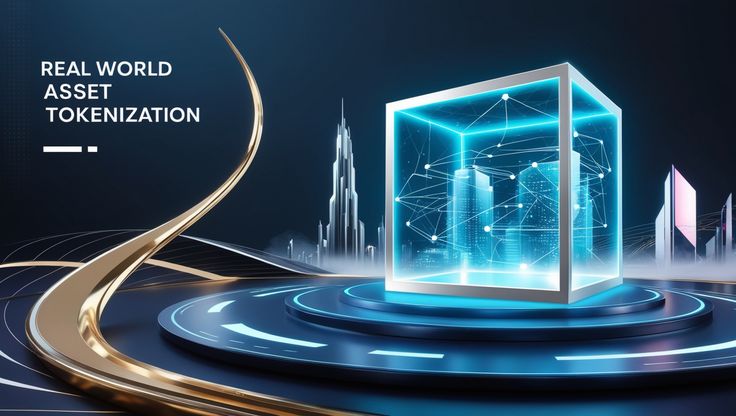
The world of investing is rapidly evolving, and asset tokenization is at the forefront of this financial revolution. By converting real-world assets into digital tokens on a blockchain, tokenization is transforming how investors access, trade, and manage assets. From real estate and equities to art and commodities, this innovative approach is making traditionally illiquid markets more accessible, efficient, and secure.
With the global asset tokenization market projected to reach $16 trillion by 2030, understanding the secrets behind asset tokenization development is essential for any forward-thinking investor. In this article, we’ll uncover the key strategies, benefits, and considerations every investor must know to capitalize on this growing trend.
What is Asset Tokenization?
Asset tokenization is the process of converting physical or financial assets into digital tokens on a blockchain. Each token represents a fraction of the underlying asset, enabling fractional ownership. For example, a $1 million property can be tokenized into 1,000 tokens, allowing investors to purchase small shares of the property rather than needing to buy the entire asset.
This fractional ownership model opens new doors for investors, providing access to high-value assets with lower capital requirements. It also enhances liquidity, as tokenized assets can be easily traded on secondary markets, creating new opportunities for diversification.
Key Benefits of Asset Tokenization for Investors
1. Enhanced Liquidity and Accessibility
Traditionally, investments in real estate, fine art, and private equity have been illiquid, requiring long holding periods. With tokenization, these assets become easily tradable on blockchain-based exchanges, improving liquidity.
-
Investors can buy and sell fractions of assets with minimal friction.
-
Tokenized assets provide access to previously exclusive markets, such as luxury real estate or rare collectibles.
2. Improved Transparency and Security
Blockchain technology ensures transparent and tamper-proof records of ownership and transactions. This reduces the risks of fraud and ensures trust in the investment process.
-
Smart contracts automate and enforce agreements, minimizing disputes.
-
Immutable blockchain records provide clear, verifiable ownership history.
3. Fractional Ownership and Diversification
Asset tokenization enables fractional ownership, allowing investors to diversify their portfolios across multiple asset classes.
-
Investors can hold small stakes in various properties, artworks, or businesses.
-
Diversification reduces risk and enhances portfolio stability.
4. Cost Efficiency and Faster Settlements
By eliminating intermediaries, tokenized asset transactions are faster and more cost-effective.
-
Reduced reliance on brokers and legal agents lowers transaction fees.
-
Near-instantaneous settlements increase efficiency, boosting liquidity.
Also Read: Asset Tokenization in Blockchain: A Game-Changer for Investors and Businesses in 2025
How Asset Tokenization Development Works
The asset tokenization development process involves several critical steps to ensure compliance, security, and scalability. Here’s how it works:
1. Asset Selection and Valuation
The first step is identifying the asset to be tokenized. This could be real estate, commodities, stocks, bonds, or even intellectual property. The asset is then appraised to determine its market value, which defines the token price.
2. Legal and Regulatory Compliance
Ensuring compliance with local and international regulations is crucial for asset tokenization. Tokenized securities must adhere to financial laws and investor protection standards, including KYC (Know Your Customer) and AML (Anti-Money Laundering) protocols.
3. Token Creation and Smart Contracts
The asset is divided into digital tokens on a blockchain network (Ethereum, Polygon, or Solana). Smart contracts automate the transfer of ownership, enforce agreements, and manage transactions securely and transparently.
4. Issuance and Distribution
Tokens are offered through a security token offering (STO) or private sale. Investors can purchase and trade the tokens, representing fractional ownership of the underlying asset.
5. Secondary Market Trading
Tokenized assets can be traded on regulated digital asset exchanges, providing liquidity and allowing investors to easily buy or sell their holdings.
Top Industries Benefiting from Asset Tokenization
1. Real Estate
Real estate tokenization allows property owners to fractionalize and sell shares of their assets. This opens real estate investment opportunities to smaller investors and increases market liquidity.
2. Art and Collectibles
High-value artworks and collectibles can be tokenized, enabling investors to own fractions of rare pieces. This creates new avenues for art financing and democratizes access to the fine art market.
3. Private Equity and Venture Capital
Tokenization is revolutionizing private equity by making it easier to trade shares of private companies. It also enhances liquidity for startups and venture capital firms.
4. Commodities and Precious Metals
Gold, silver, and other commodities can be tokenized, allowing investors to trade fractional ownership without physically holding the asset.
Choosing the Right Asset Tokenization Development Services
For businesses and investors looking to leverage tokenization, partnering with a reliable asset tokenization development services provider is essential. These companies offer end-to-end solutions, including blockchain development, token issuance, smart contract integration, and regulatory compliance.
By working with experienced asset tokenization development solutions, investors can ensure secure, scalable, and compliant tokenization processes, maximizing the potential of their digital assets.
Future Outlook: Why Asset Tokenization is Here to Stay
As blockchain technology continues to evolve, asset tokenization will become a mainstream investment strategy. With the potential to unlock trillions of dollars in previously illiquid assets, tokenization is transforming the financial landscape.
According to industry forecasts, over 10% of global GDP will be stored on blockchain by 2027, highlighting the growing adoption of asset tokenization. Forward-thinking investors who embrace this trend early will gain a significant advantage in the evolving financial ecosystem.
Final Thoughts
Asset tokenization offers unprecedented opportunities for investors, providing enhanced liquidity, fractional ownership, and access to new asset classes. By understanding the secrets of asset tokenization development and partnering with trusted asset tokenization development solutions providers, investors can unlock new growth potential.
As the world moves toward a decentralized financial future, tokenized assets will play a vital role in reshaping global investment strategies. Now is the time to embrace this transformative technology and secure your position in the next era of investing.